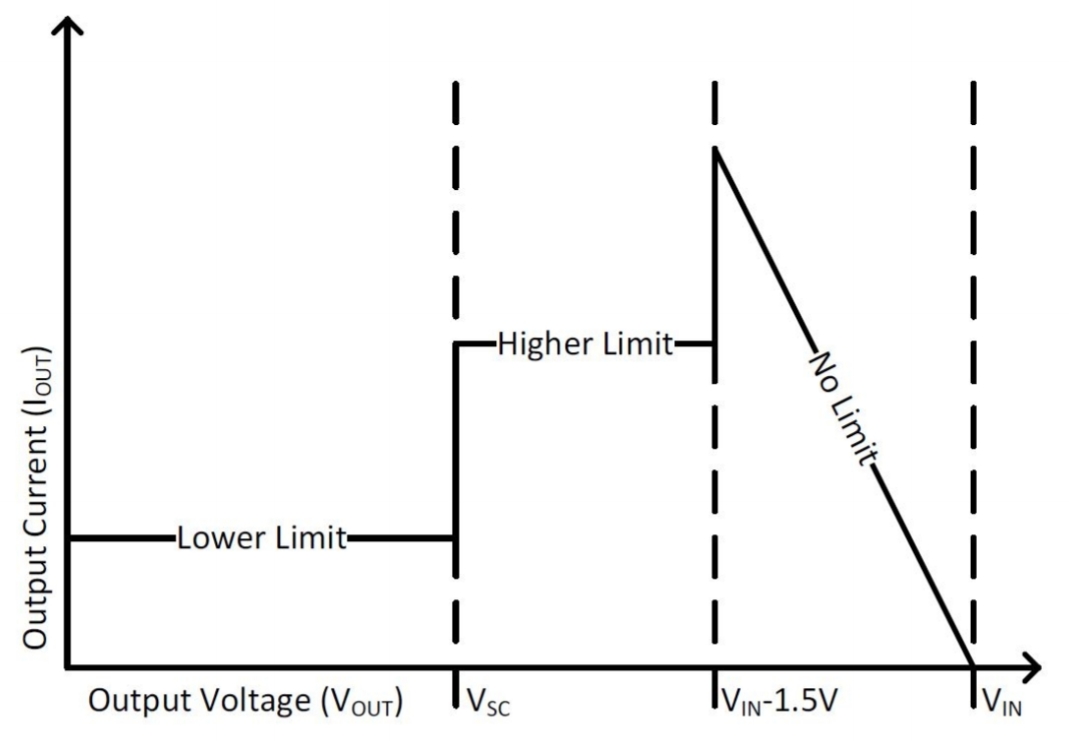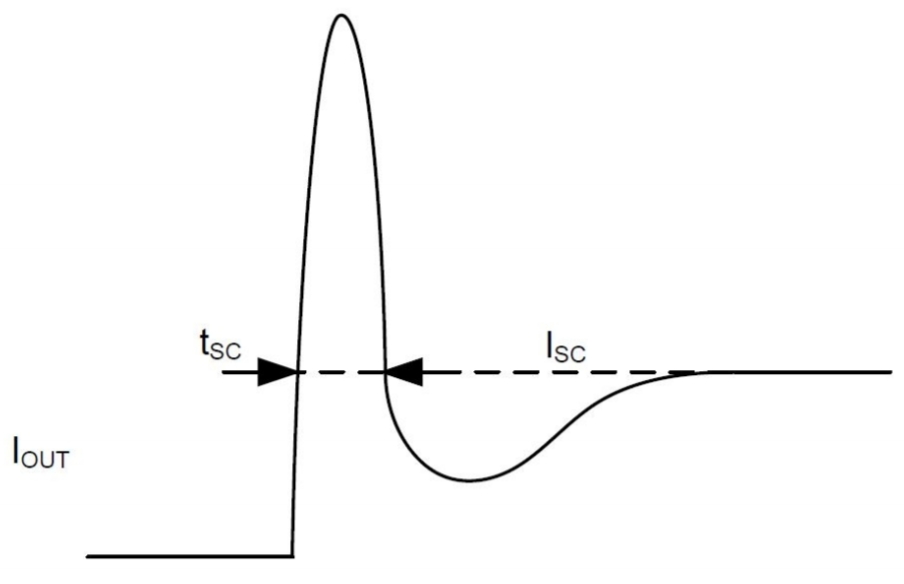SLVSFT0A July 2021 – December 2021 TPS22992
PRODUCTION DATA
- 1 Features
- 2 Applications
- 3 Description
- 4 Revision History
- 5 Device Comparison Table
- 6 Pin Configuration and Functions
-
7 Specifications
- 7.1 Absolute Maximum Ratings
- 7.2 ESD Ratings
- 7.3 Recommended Operating Conditions
- 7.4 Thermal Information
- 7.5 Electrical Characteristics (VBIAS = 5 V)
- 7.6 Electrical Characteristics (VBIAS = 3.3 V)
- 7.7 Electrical Characteristics (VBIAS = 1.5 V)
- 7.8 Switching Characteristics (VBIAS = 5 V)
- 7.9 Switching Characteristics (VBIAS = 3.3 V)
- 7.10 Switching Characteristics (VBIAS = 1.5 V)
- 7.11 Typical Characteristics
- 8 Timing Diagram
- 9 Detailed Description
- 10Application and Implementation
- 11Power Supply Recommendations
- 12Layout
- 13Device and Documentation Support
- 14Mechanical, Packaging, and Orderable Information
Package Options
Mechanical Data (Package|Pins)
Thermal pad, mechanical data (Package|Pins)
Orderable Information
9.3.6 Short Circuit Protection (TPS22992S)
The device limits current to the output in case of output shorts. When a short occurs, the large VIN to VOUT voltage drop causes the switch to limit the output current (ISC). When the output is below the short circuit threshold (VSC), a lower limit is used to minimize the power dissipation while the fault is present. The device continues to limit the current until it reaches its thermal shutdown temperature. At this time, the device turns off until its temperature has lowered by the thermal hysteresis (20°C typical) before turning on again.
 Figure 9-1 Output Short Circuit Current
Limiting
Figure 9-1 Output Short Circuit Current
Limiting Figure 9-2 Output Short Circuit Response
Figure 9-2 Output Short Circuit Response